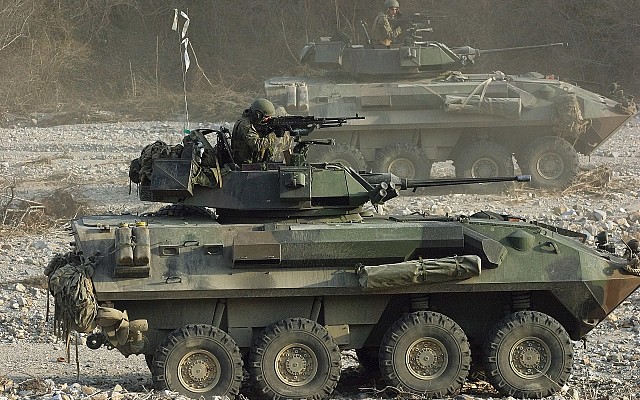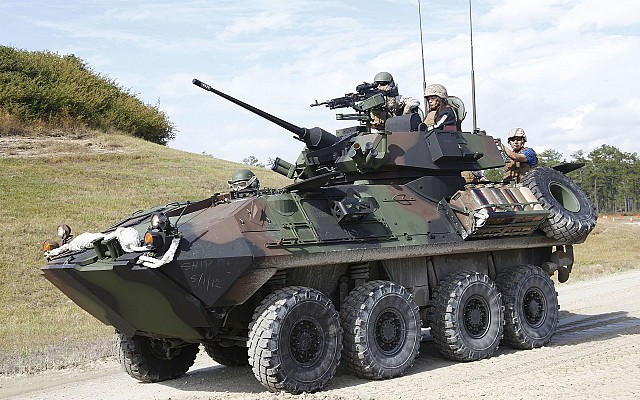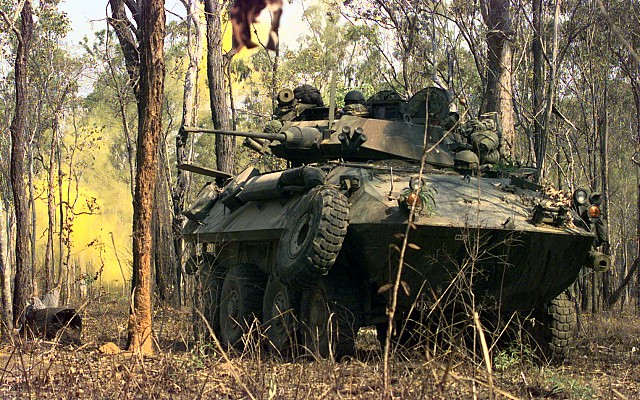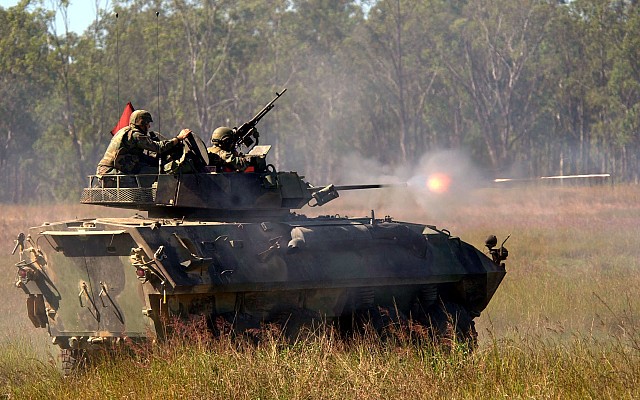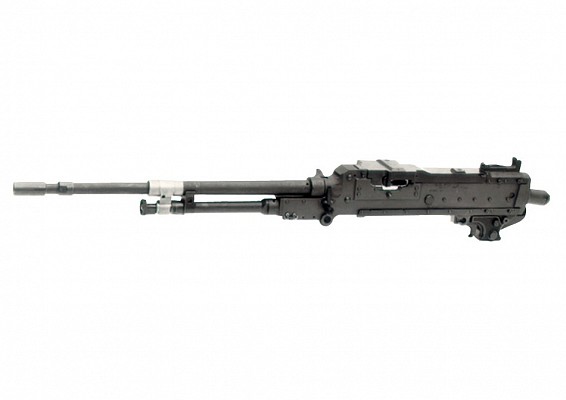LAV-25
Overview
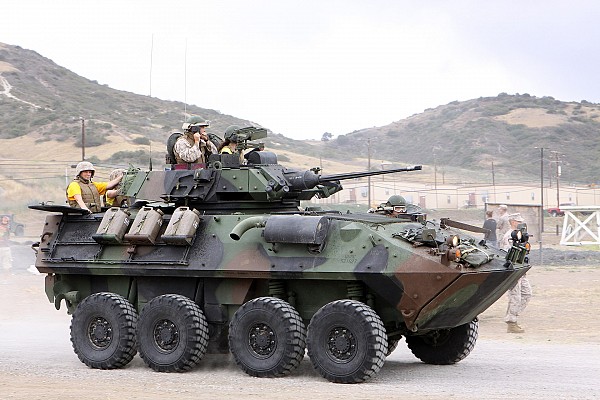
LAV-25
Right side view of US Marine Corps LAV-25 in 2013.
Source: US Marine Corps -
© Public domain
Switzerland
Saudi Arabia - National Guard
Description
Introduction
The LAV-25 is a late Cold War era infantry fighting vehicle of Canadian origin. The LAV-25 is part of the Piranha family of vehicles and was specifically developed for the United States Marine Corps. A family of vehicles was developed on this chassis.
Design
The LAV-25 is based on the 8x8 variant of the Swiss Piranha design. The LAV-25 for the USMC is a separate sub-family to meet US requirements and being produced in Canada. The engine is located in the front, a turret is fitted in the middle and the passenger compartment at the rear has two rear doors and several roof hatches. The LAV-25 was the first Piranha type vehicle to be equipped with an autocannon as standard armament.
Firepower
The two man turret has a stabilized 25mm M242 Bushmaster autocannon with coaxial 7.62mm M240 machine gun. A second machine gun is fitted on a pintle mount. A total of 630 rounds are carried for the autocannon, of which 210 are ready to fire.
Protection
The LAV-25 has steel armor of a relatively limited level of protection. The armor should protect the crew and passengers against small arms fire and shell splinters. The tires are of the run flat type. Applique armor kits have been developed. An NBC system is fitted as well as two banks of smoke grenade dischargers on the turret.
Mobility
The 8x8 wheeled chassis provides a very good mobility on roads and reasonable mobility in difficult terrain. The LAV-25 is fitted with the 6V-53T diesel engine which is also used in the tracked M113A3. Power to weight ratio is good and the maximum speed on roads is 100 km/h. The LAV-25 is amphibious and is powered in the water by two small propellers located near the rear wheels.
Users
The LAV-25 was adopted by the United States Marine Corps. Becoming operational in the early 1980's. Over 400 were acquired in the LAV-25 configuration. Six other configurations for other roles were acquired as well. Hundreds more were acquired by the Saudi Arabia National Guard.
Variants
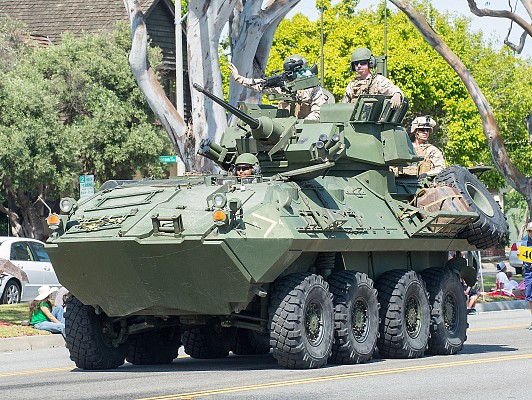
LAV-25
US Marine Corps LAV-25 on parade in 2015.
Source: mark6mauno -
© CC BY 2.0
List of LAV-25 variants
Details
LAV-25 family of vehicles
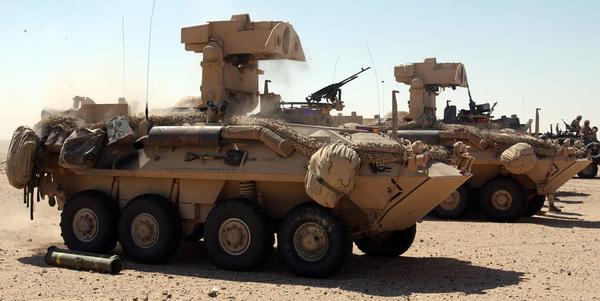
LAV-AT
Two LAV-AT in desert camoulage with TOW launcher in raised position.
Source: US Marine Corps -
© Public domain
List of USMC LAV variants
Media
Subcomponents
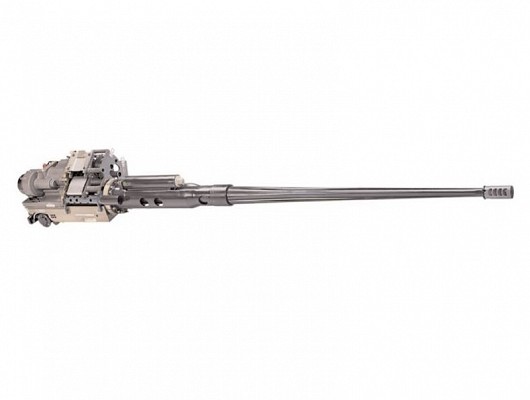
25mm Bushmaster
The 25mm M242 Bushmaster autocannon is the main armament of the LAV-25.
